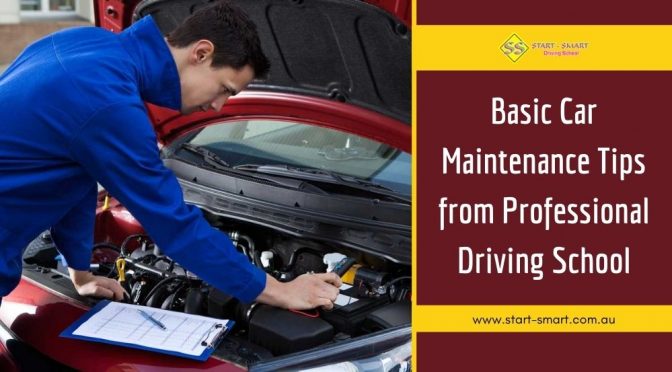Car Sarasota Wraps are a great way to get your business name and logo in front of people while on the road. They’re also a less expensive alternative to painting your vehicle.

However, they require some care. Scratches and dents stick out just as they would under paint, so fixing these issues is important before getting a wrap.
Car wraps are much easier to maintain than paint. You don’t have to worry about fading, chipping, or scratching — though this depends on the wrap’s quality. If you’re careful to keep it in a garage or use a car cover, your wrap should last longer. Aside from some upkeep to keep the surface smooth, most owners find that their wraps last at least two years or more.
In addition to the protective benefits, a vehicle wrap can be installed faster than a paint job. The average paint job can take hours or days, but wraps can usually be finished in less than a week. That speed advantage may not seem like a big deal, but it can save you time and money when you need to get your car back on the road quickly.
Most wraps require only routine cleaning and upkeep. Washing your wrap is simple – just be sure to avoid automatic car washes or low-quality hand-washes. The brushes and solutions used in these types of washes can scratch or damage matte and satin wraps. Instead, you should be washing your wrap by hand with lukewarm water and mild detergent automotive specific soaps.
You can also protect your wrap with a ceramic coating, which will add an extra layer of protection and durability. The installer will apply this liquid “nano ceramic” to the surface of your wrap, which will harden and add more resistance to UV damage and stains. The cost for this service is additional, however, and it’s not necessary for most drivers.
The most important thing to remember when caring for a car wrap is that you must not use any kind of wax or polish. Wax and polishes are designed to make a car look shiny, but they can actually cause the vinyl and adhesive on your wrap to degrade over time. This is especially true for satin and matte finishes, which should be avoided at all costs.
Easy to Remove
Car wraps are a great way to change the look of your vehicle and protect the original paint. However, over time wear and tear from the elements and road salt can take a toll on the vinyl wrapping. When this happens, it may be necessary to remove the wrap and reapply. The process is not as difficult as it sounds, but it does require a bit of patience and the right tools.
The most important thing to remember when removing a car wrap is to do it slowly and carefully. Don’t yank on the vinyl, as this can cause it to come off in tiny little pieces. Instead, peel the wrap off at an angle. This will make it easier to remove the adhesive residue underneath.
Before you start peeling, it’s a good idea to warm up the vinyl with a heat gun. This makes it more pliable and loosens the adhesive underneath. After warming up a section, gently lift the edge of the wrap and begin pulling it off. You’ll want to repeat this step for each section of the car wrap, and be sure to maintain an even amount of pressure throughout the removal process.
It’s also a good idea to work in a well-ventilated area. If possible, try to avoid working in direct sunlight, as this can cause the vinyl to rip into smaller pieces and become more difficult to remove. If you’re going to use a store-bought adhesive residue remover, be sure to test it on a small hidden spot on your car before using it on the entire surface.
The final step in the process is to clean up any remaining adhesive residue and wash your car thoroughly. This can be a tedious task, but it’s essential to get the job done right. By following these simple tips, you can successfully remove your car wrap without any hassle. If you’re not comfortable doing the work yourself, there are professional companies that can assist you. These experts have the skills and equipment to remove the wrap quickly and efficiently.
Aesthetically Appealing
Car wraps offer an unparalleled level of aesthetic customization, allowing drivers to personalize their vehicles with vivid hues and unique designs. Aside from being a great way to express one’s personality, wraps are also a cost-effective alternative to traditional painting. Moreover, they help protect vehicle paint from scratches and other blemishes that can affect the value of a car.
Unlike traditional painting, which can take days to complete, car wrapping is a quick and easy process that typically takes only a few hours for partial wraps and two or more for full wraps. In addition, a professionally installed car wrap can be removed easily, leaving no damage to the original paint underneath. Choosing the right graphics for your vehicle wrap is important as less is often more. Any text or images should have a clear purpose and be well-designed. Avoid cluttered or confusing graphics as they can distract from the message you are trying to convey.
Vehicle wraps come in a wide range of colours and finishes, including color-shifting wraps that transition from one colour to another depending on the angle of light. They can also be finished to mimic other materials such as carbon fibre or chrome, which gives them a very premium appearance. Furthermore, they are available in various textures, which can make the surface of your car feel different when you run your hands over it.
Another benefit of car wraps is that they have hydrophobic properties, which means they repel water and dirt, making washing your vehicle a breeze. This significantly decreases your maintenance workload, as you no longer have to worry about hand-washing and waxing.
When paired with the right vinyl material, your car wrap will not only look amazing but also perform well. This is because the vinyl used for vehicle wraps is made with a high-quality base coat that is resistant to UV radiation and other chemicals found in the environment. This prevents premature fading and keeps the wrap looking new for as long as possible.
As a result, your wrap will be able to endure harsh weather conditions and last for a very long time. Moreover, this protective layer safeguards the car paint from damage caused by sun exposure, road debris, and other environmental factors. In addition to this, it will enhance the appearance of your vehicle and increase its resale value.
Long-Lasting
Car wraps last a long time, making them an excellent value. They’re often less expensive than a paint job and they can be easily removed when it comes time to trade in or sell your vehicle. This makes them an attractive option for businesses that frequently change vehicles or for individuals who are interested in customizing their cars.
The longevity of a car wrap depends on the material it’s made from, how it’s installed and how often it’s washed. High-quality wraps are more durable and resist fading, scratching, and cracking. They’re also more resistant to abrasions and UV damage than painted surfaces. If you invest in a quality wrap, it’s possible that it will last for up to seven years.
A wrap that’s properly installed by a professional will hold up well over time. It’s important to hire someone who has extensive experience working with vinyl. Small mistakes during the installation process can cause air bubbles or wrinkles, which will weaken the adhesive and shorten the lifespan of the wrap.
Regular washing is essential for extending the life of a car wrap. As it sits on your vehicle, dirt, dust, grease, and road gunk collect in the pores of the vinyl. Over time, this can wear the vinyl down and cause it to degrade or become damaged. Washing your vehicle with vinyl-appropriate products will help to keep it looking fresh and clean.
It’s a good idea to wash your vehicle at least once or twice per week, depending on how much driving you do. Washing helps to remove everyday grime and prevents a buildup of bacteria, which can lead to mold and mildew growth on your vehicle’s exterior. In addition, washing regularly prevents the buildup of grit and sand, which can scratch or tear your wrap.
Parking your vehicle in a garage and using a protective car cover is another way to prolong the life of your wrap. It’s also a good idea to avoid automatic car washes, as the harsh brushes could lift or scratch the wrap.
